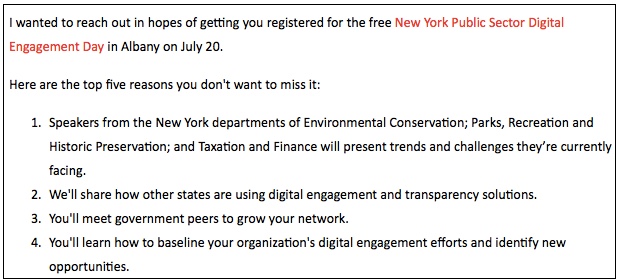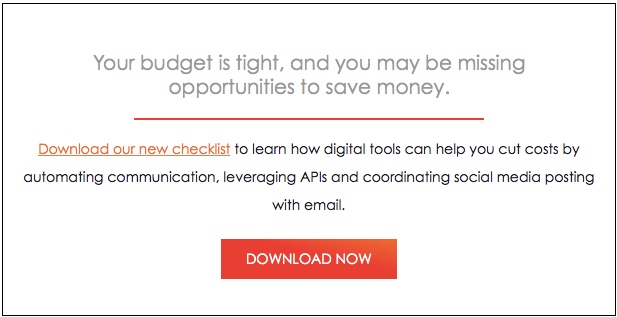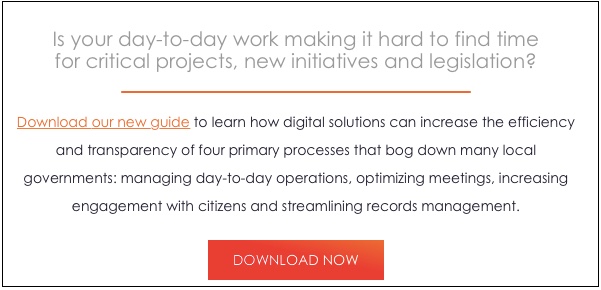
Do you ever feel like you’re in a writing rut when it comes to drafting emails?
While government email copy is typically more buttoned-up and professional in tone, it doesn’t mean you can’t spruce up your writing and have fun with the process. The more engaging your copy is, the more your message will resonate, and the more likely you’ll be to convince your reader to take action.
Here are some tips to help you unleash your creativity and write engaging content that grabs — and keeps — your readers’ attention.
When you first sit down to write an email, having the email concept on-hand will help get you started. Instead of staring at a blank screen, quickly jot down an outline with key points you need to hit. Then, use one of these common starting points as your springboard into creativity. Here are a few examples of starting points that can help you while drafting strong emails:
Jot down the top five key messages that might intrigue your reader — it could be reasons to attend an event, top takeaways from a report, benefits of enrolling in program, etc. Take a cue from Buzzfeed and format these top five points into short paragraphs to make a strong, easy-to-read email.
Here’s a real-life example of a strong “top five” email:

Start by writing down a challenge to your audience that could improve or support them in doing something differently. This challenge could be upping their recycling efforts or participating in a local event.
Here is an example of a real-life challenge message:

By asking your reader a question, you can engage them right away. This strategy can help the reader see themselves in a certain scenario, and works to connect in a more meaningful way.
Here is an example of strong email with a question up front:

More tips:
Creativity doesn’t just magically happen for most people. There may be specific times of the day or locations days where writing and ideas will flow better for you. Try writing at different times and in different environments to test what works best for you.
Some people may prefer to write first thing in the day. You could also try blocking off an hour and setting a timer to see what you can accomplish. Sometimes setting constraints helps you think less about perfecting each sentence so you can get the bulk of your thoughts out. Plus, you can always go back and edit later.
If you’re not feeling inspired, try one of these creativity boosters:
Pre-header text describes the title of your email plus a short preview of the email body. This first-impression text is important real estate to influence open rates; it should compliment your subject line.
The pre-header text in this screenshot appears underneath the sender and subject line. It gives more information to the reader to entice them to open the email. Here is an example:

Don’t think of editing as “correcting.” Instead, think of it as improving. Spell-check software doesn’t catch every error, so ask your peers for help.
The saying “two heads are better than one” rings especially true in copywriting. Having a fresh set of eyes and a second opinion never hurts. Enlist the help of your peers to read through your writing, not only for spelling and grammar errors, but also readability.
Make sure to ask yourself these questions when reviewing your own and other’s’ work:
Check out our Plain Language Playbook for more steps to make your writing comprehensible and impactful.
Having trouble with a title? Ask your teammates. Besides making your writing more engaging for the reader, you can also keep your coworkers engaged in what you’re working on.
Share a snippet of your writing and three ideas for the title or subject line then ask people to vote for their favorite. Encourage them to share their own ideas too. Take it a step further and share performance stats with them to let them know how it did.
If there are two ideas that you really like, try doing an A/B test to see which one resonates the best with your audience.
I hope this list helps you take the dread out of your next email copy draft. Have a great piece you just wrote and are dying to share? Tweet us a link @Granicus and we’ll share it with our community of over 27,000 followers!